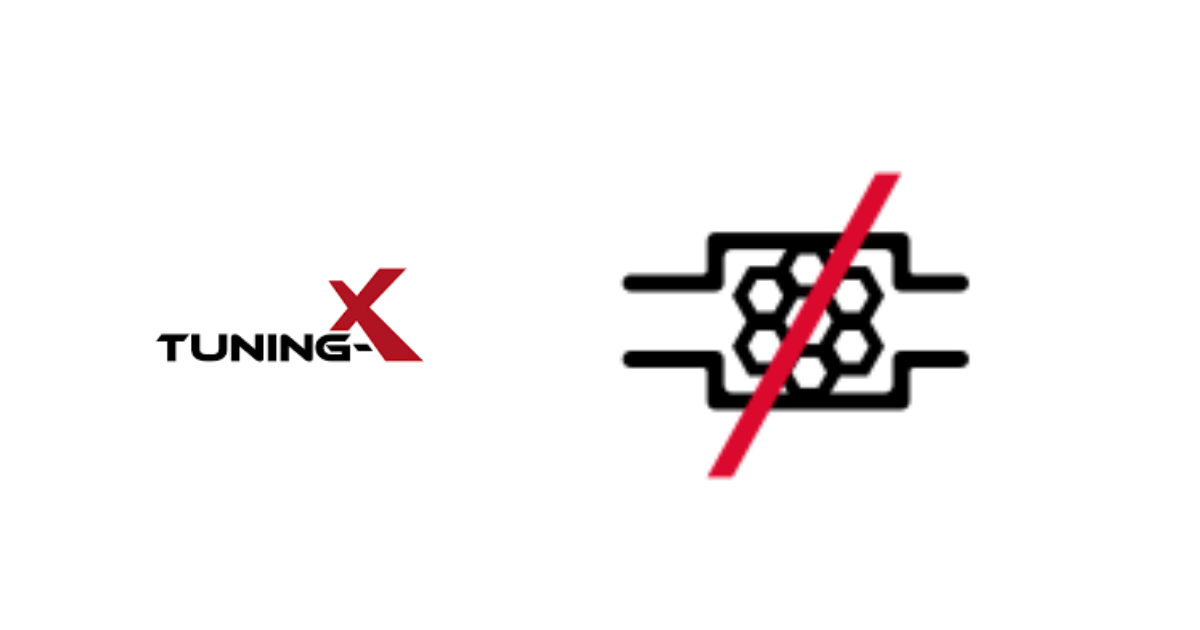DeCAT: What is DeCAT? Reasons, Benefits and Drawbacks.
The car’s exhaust system collects all the gases from the combustion; when an internal combustion engine is running, it removes the harmful substances, reduces the noise and ejects the gases in a point of the car away from the passengers.
It is composed of the Exhaust Manifold, which is the first section of the exhaust system after the engine, the catalyst, oxygen sensors, exhaust pipes, a muffler, a resonator and a tailpipe. The Catalyst is what we will deal with.
What is DeCAT?
Catalyst deletion, or DeCAT as it is mostly known, is the procedure in which the vehicle’s catalyst is removed. It sounds easy, but simply physically removing the catalyst is not the only thing that should be done.
As it is known, oxygen sensors are attached to the catalyst system that have to be removed as well, and then the vehicle’s ECU has to be reprogrammed so to not recognize the removed sensors and fine tune the fuel mixture as well.
In case of EGR presence, there might need to be adaptations to any sensor that interacts with the catalyst also.
Why should someone do DeCat?
The main reason we remove the catalyst converter is that it chokes the vehicle’s engine, and engine power and torque are greatly influenced. Without a catalyst converter, exhaust gases can flow more freely, increasing engine performance, especially in high RPMs.
Engine noise is also greatly affected, so if a driver prefers the louder exhaust note that comes out of his car, removing the catalyst converter is one-way.
How To Do DeCat?
Decat process refers to the removal of the car’s catalyst and its replacement with a metal pipe, in order to connect the engine with the rest of the exhaust system.
This removal, though, is not the only thing that must be done; beside the catalyst that is removal and replacement from a straight pipe, other components like O2 sensors are interacting with the ECU that will return error codes to a scanner tool and led to warning lights on the car dashboard.
In order to make DeCat possible, a tuner must alter all the necessary data in the ECU to trick the ECU about the Catalyst’s removal (chiptuning process).
Decat Pros and Cons.
Like all the interventions in a vehicle, DeCat has significant advantages and disadvantages.
Below, we quote the most important ones to make it easier for a car owner to decide if DeCat is what fits his needs.
- Increased Horsepower. The first and most noticeable advantage of DeCat is the increase in the engine’s horsepower. Since catalytic converters make it difficult for exhaust gases to flow freely from the engine to the environment, the overall engine performance is affected negatively, loosing horsepower. By removing the catalyst, the exhaust gases flow smoother, ending up with increased horsepower and the general engine’s performance.
- Improved initial acceleration. An improvement in the vehicle’s initial acceleration will be noticed by the driver. Since back pressure will be reduced and the engine will run smoother, the car will accelerate much faster and much smoother after DeCat.
Elimination Problems Derived by Catalyst.
Like all engine components, catalyst converters with aging, they will face wear and tear. By removing a catalytic converter, drivers will not have to worry about all the problems that come with it.
A great amount of money will be saved, since catalytic converter systems require regular maintenance, repair, and replacement costs as well.
- Environment pollution. The most significant disadvantage of DeCat is obvious, the negative impact on the environment. Catalytic converter systems play a crucial role in purifying and eliminating harmful substances from a vehicle’s emissions. They achieve it by oxidizing unburned hydrocarbons and lowering the nitrogen levels in the exhaust. Removing a catalyst converter leads to a vehicle that pollutes the environment and does not comply with the strict emissions most countries have.
- Increased engine noise and risk of engine failure. DeCat leads to a great increase in engine noise, some drivers find this disturbing and a negative consequence of DeCat. A lot of drivers believe that the increased noise spoils the driving experience. Last but not least is the risk of engine failure. If DeCat is not performed by experienced professionals line Tuning-X tuners, and with professional chiptuning tools, it can be extremely harmful to the engine. The absence of the catalyst will lead to lowered back pressure. The engine management system will try to regulate this by allowing more air to enter in the engine, altering the fuel mixture, and making it lean, (this means too much air and too little fuel).
Tuning-X part in DeCat.
With years of experience and the expertise that derives from many years in the tuning field, Tuning-X’s chiptuning file service can offer the best results in a DeCat procedure.
Highly trained and experienced professional tuners offer perfectly executed |DeCat procedures, making sure all the goals will be fulfilled and minimizing all the risks and drawbacks that can happen.
Conclusion on DeCat.
DeCat is popular among drivers and tuners, driven most of the time by the need to increase horsepower or reduce or even eliminate all the problems and costly repairs that come with a catalytic converter.
Even though it sounds promising, a car owner must understand all the potential risks and drawbacks this procedure has.
An experienced, well-trained professionals like the tuners in Tuning-X must be trusted for this procedure.


